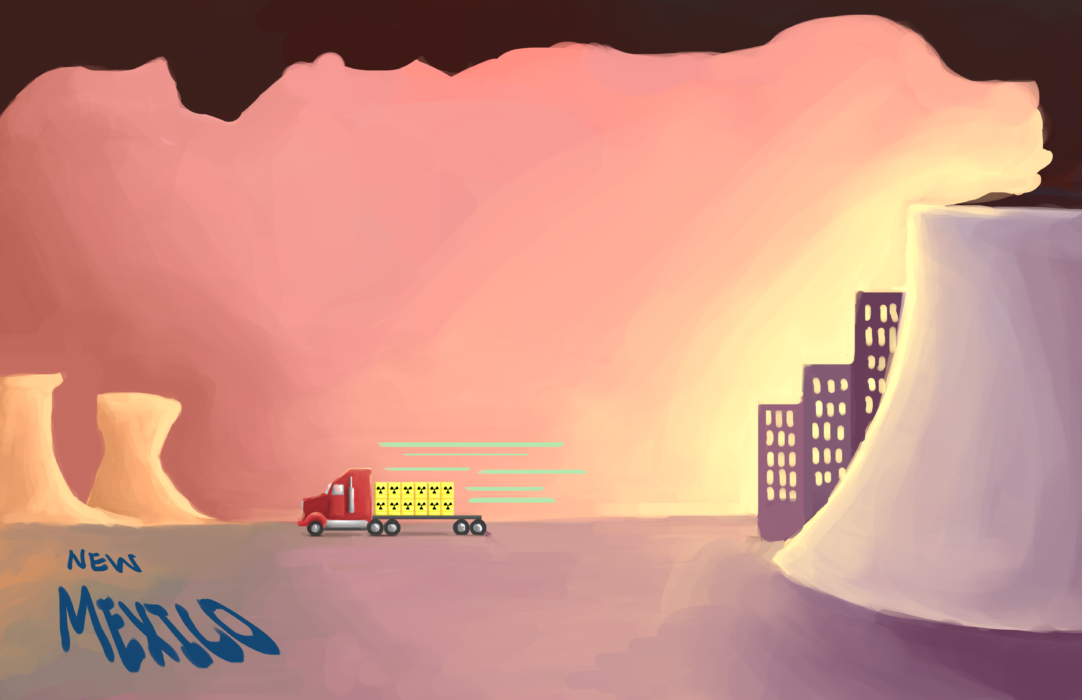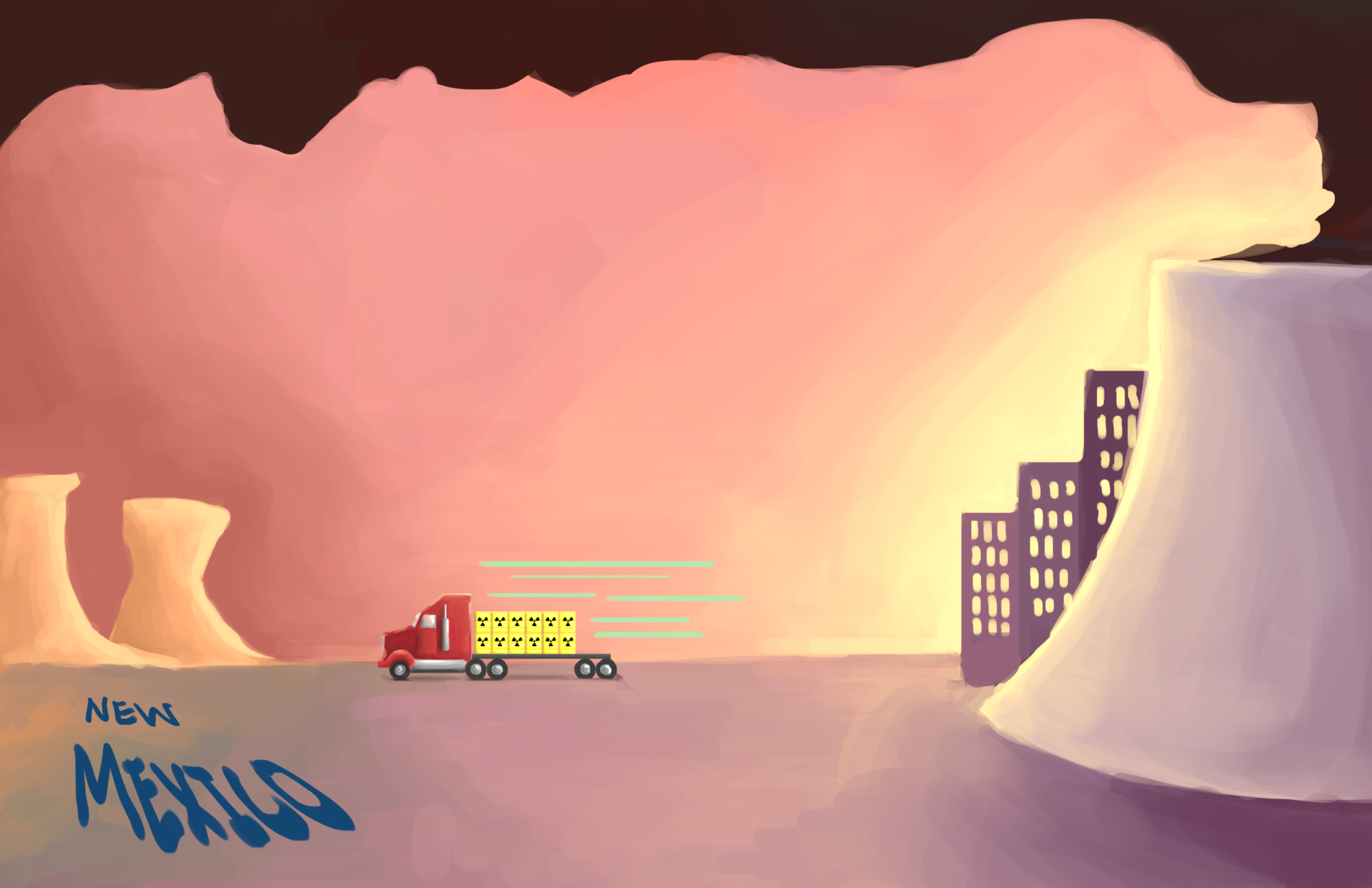
In the late 1970s and early 1980s, Linda Evers was a uranium miner in northern New Mexico. Today, she is the chairperson of the Post-’71 Uranium Workers Committee, a group that started with 35 members in 2007 but now has just three. The other 32 founding members died from health issues Evers believes were related to their time in the uranium mines.
Evers herself was diagnosed with degenerative bone and joint disease at 29. She has what she characterizes as debilitating arthritis, which she attributes to her former profession. She believes her children, too, were affected by the work: Both of them had birth defects that required multiple surgeries to address.
Many Westerners understand Evers’ plight, especially those in the Navajo Nation who have suffered severe health impacts from their role as miners during the uranium boom from the 1940s through the 1970s. A 1982 study examined 17 Navajo lung cancer patients admitted to a hospital between February 1965 and May 1979; 16 of them were uranium miners. A 1995 study in the American Journal of Public Health found similar results correlating lung cancer and uranium mining in Navajo patients, as well as elevated standardized mortality ratios for lung cancer, tuberculosis, pneumoconiosis, and other respiratory diseases.
While local miners bore the health consequences, most of that uranium found its way to Midwest and East Coast nuclear power reactors. And now the radioactive waste from that uranium — and all the potential health and environmental impacts that come with it — may find its way back to New Mexico.
The United States Nuclear Regulatory Commission (NRC) is reviewing an application for an interim storage facility proposed by New Jersey-based Holtec International. The facility, which would be the first of its kind, would house high-level and low-level nuclear waste from reactors across the country near Carlsbad, New Mexico. If the project passes all required regulatory reviews, a license could be issued for the site by 2021.
Several environmental groups, including the Sierra Club, petitioned to conduct a hearing challenging the license application, but the NRC Atomic Safety and Licensing Board denied the request earlier this year. If the NRC gives the go-ahead on Holtec’s application, the company would receive a permit to store waste in New Mexico for 40 years, with the option to renew.
In a letter to Energy Secretary Rick Perry and NRC Chairwoman Kristine Svinicki, New Mexico Governor Michelle Lujan-Grisham called the proposal “economic malpractice.”
Evers is astounded that the waste from uranium she helped mine, which has devastated her community already, might end up in New Mexico again. “How many people have to die before politicians get it through their heads that radiation kills?” she said.
Three of NRC’s four low-level radioactive uranium waste storage sites in the U.S. — which store items like contaminated shoe covers, clothing, wiping rags, mops, and swabs — exist in the West: in Washington, Utah, and West Texas. Southeastern New Mexico is already home to the Waste Isolation Pilot Plant (WIPP), which has been storing plutonium waste from nuclear weapons since 1999. The Department of Energy also stores high-level nuclear waste — mostly plutonium from defense-related nuclear activities — in Idaho, Washington, Colorado and South Carolina. A planned permanent storage facility at Yucca Mountain in Nevada for all this nuclear waste has never materialized.
According to Eric Jantz, staff attorney at the New Mexico Environmental Law Center, communities in the West — especially members of the Navajo Nation in New Mexico, Utah and Arizona — have disproportionately suffered the environmental and health consequences of the uranium-nuclear fuel chain without receiving any of the benefits — that is, the power generated from this radioactive element.
There are 98 operating commercial nuclear power reactors spread across the country. Only six of these reactors are located in the West, and none in New Mexico.
“We didn’t benefit from their nuclear power plant, so why should we store that waste?” Evers said. “I find it quite insulting. I don’t know who decided we’re the garbage can of the United States.”
Rose Gardner of Eunice, a community near Carlsbad, is concerned that the nuclear waste storage will just add to the pollution problems her area already experiences thanks to oil and gas extraction in the Permian Basin.
“You’re constantly exposed to nasty air,” she said.
An outspoken opponent of Holtec, Gardner sees the nuclear fuel chain — with its beginning and possible end in New Mexico — as an environmental justice issue. “They’re picking on brown-skinned people,” she said, noting that her community is more than 50 percent Hispanic.
Jantz, the attorney, agrees, calling the uranium-nuclear fuel chain “possibly one of the most environmentally racist choices that can be made.”
There are more than 500 abandoned uranium mines on Navajo Nation land, according to the Environmental Protection Agency. According to the Environmental Protection Agency, people on the Navajo Nation are still subject to radiation if they live in a home built with material from a uranium mine or mill or by drinking contaminated water. Radiation can cause a range of health problems including lung cancer, bone cancer, and impaired function of the kidney, according to an EPA fact sheet geared toward Navajo communities.
Congressional appropriations committees say an interim waste storage facility is necessary because of the stalled progress at Yucca Mountain (President Donald Trump has called for funding to restart the Yucca Mountain licensing) and the buildup of spent fuel at reactor sites.
This area of New Mexico was chosen for a number of reasons, including an arid climate ideal for used-fuel storage, according to Joy Russell, Holtec’s senior vice president and chief strategy officer. Russell also pointed to a number of other factors: geologic stability, a remote location 35 miles from nearest population centers, and the fact that New Mexicans are already “nuclear-savvy.” Russell said they’ll be using “the most secure and safest technology licensed by the [NRC].”
Some in New Mexico welcome the plan. “The reality is we are a very nuclear state,” John Heaton, energy development coordinator for the city of Carlsbad, told the Roswell Daily Record. Heaton noted New Mexico’s bona fides: two national laboratories, the WIPP facility, a uranium enrichment plant, and one of the country’s few nuclear engineering programs at the University of New Mexico. “We should be a core state for all things nuclear,” he said.
For its part, Holtec has said the facility will create hundreds of construction, security, operations and maintenance jobs and $1.5 million in state income taxes annually.
But some watchdogs say New Mexico is being targeted as a storage site because of its open space. Sarah Fields, with Utah-based Uranium Watch, said that organizing against nuclear storage facilities is more difficult in the West, where populations are less dense than states on the East coast. “The nuclear industry is taking advantage of that,” she said.
Furthermore, because of the failure of the federal government to identify a permanent storage site for nuclear waste, Fields said there is a concern that this proposed interim facility would become a de-facto storage site, possibly lingering for hundreds of years.

